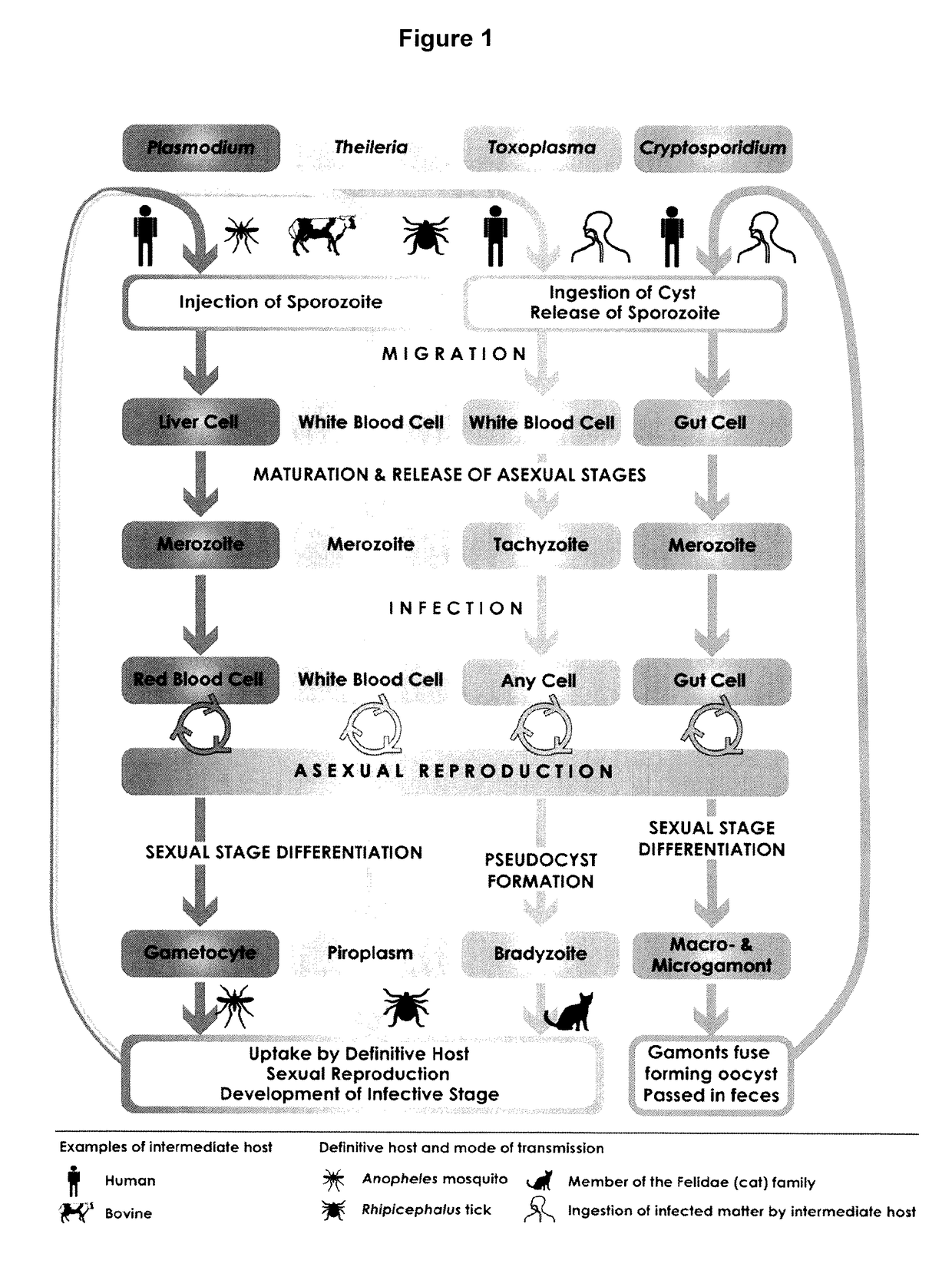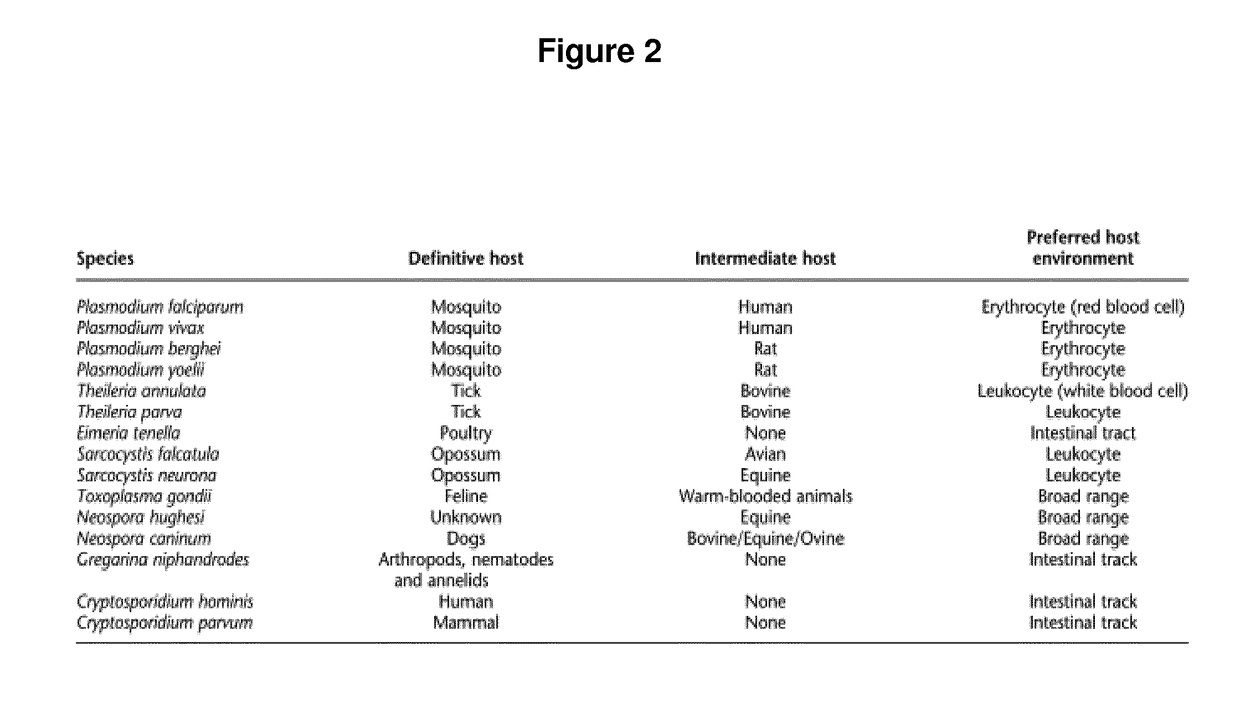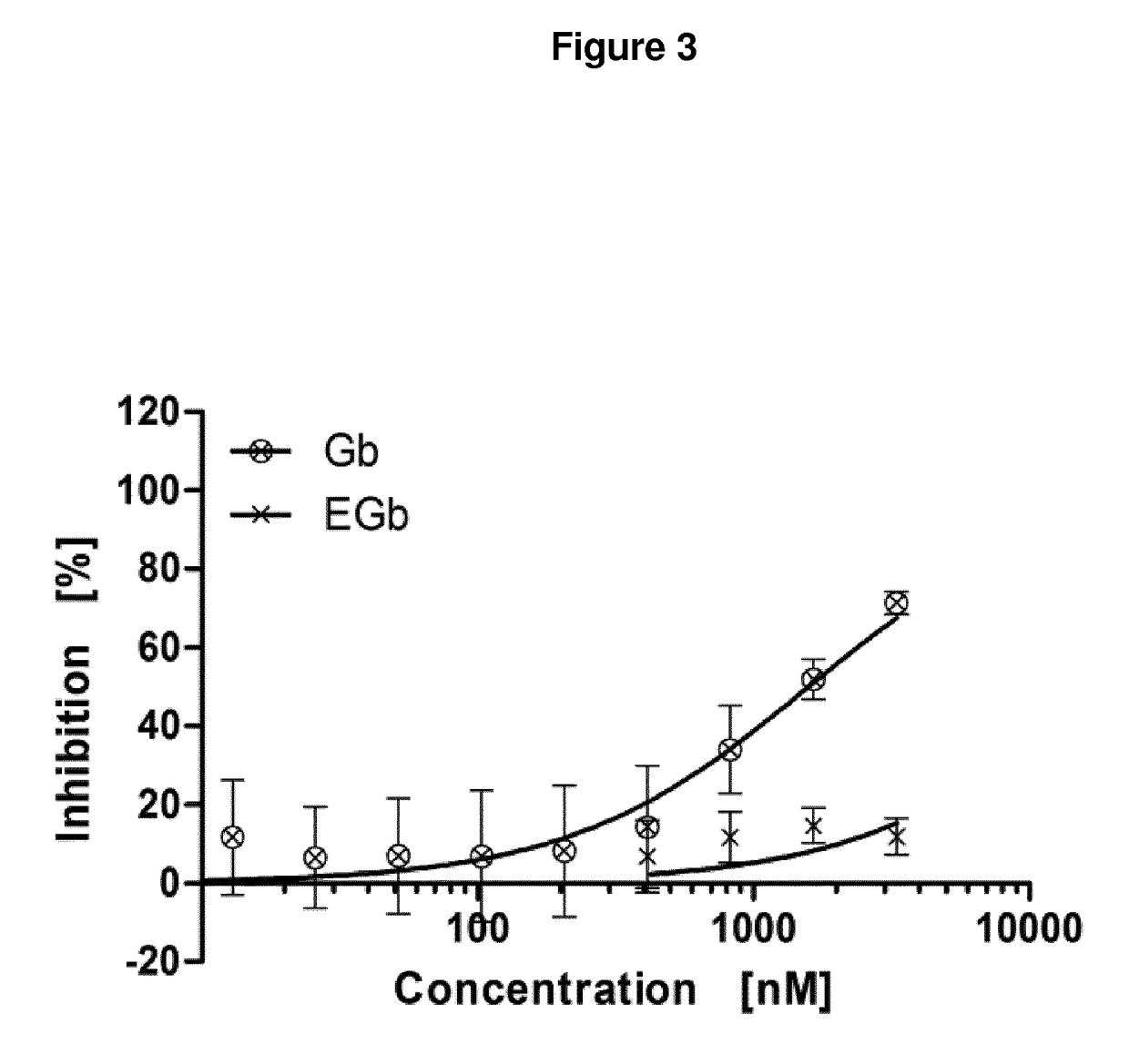Anti-parasitic complexes
a technology of complexes and parasitic proteins, applied in the field of antiparasitic complexes, can solve the problems of large health problems of immuno-compromised people, significant economic burden and global healthcare challenge, and extremely difficult development of therapeutic targets
- Summary
- Abstract
- Description
- Claims
- Application Information
AI Technical Summary
Benefits of technology
Problems solved by technology
Method used
Image
Examples
example 2
Targeting of the Merozoite Membrane
[0184]A strategy to more directly target Gb to the parasite was developed to reduce the amount of applied Gb. Targeted toxin-delivery via the parasite transferrin receptor has been presented by Surolia et al. several years ago (Surolia and Misquith 1996, Surolia 2000). While some authors claimed to have identified and characterized this plasmodial receptor (Haldar, Henderson et al. 1986, Rodriguez and Jungery 1986), others, however, argue unspecific iron uptake by the parasite and the identification of this receptor remains elusive (Clark, Fisher et al. 2013). Therefore, there is a need for a definite specific target. Promising possible targets are merozoite surface proteins (MSPs). MSP1, 2, 4 and 8 bear GPI anchors which prevent them from being shedded during merozoite invasion. They contain C-terminal, GPI anchor-adjacent, immunogenic EGF-like domains which serve as ideal target for specific antibodies (Blackman, Heidrich et al. 1990, Marshall, S...
example 3
sitic Activity of Recombinant Anti-Parasitic Fusion Protein on PF 3D7 and PFK1
[0187]For targeted delivery of Gb, we generated a scFv from the 2.44IgG1 antibody sequence by SOE-PCR using specifically designed primers which enable subsequent cloning via SfiI and NotI (FORWARD PRIMER: AACAACGGCCCAGCCGGCCATGGCCGATGTGCAGCTTCAGGAGTCGGG, REVERSE PRIMER: ATGGTGGGCGGCCGCTTTTATTTCCAACTTTGTCCCC).
[0188]Between the V-gene segments, a glycine-serine linker was incorporated (FORWARD PRIMER: GGAGCCGCCGCCGCCAGAACCACCACCACCAGAACCACCACCACCT GAGGAGACGGTGACCGTGGTCCC, REVERSE PRIMER: GGCGGCGGCGGCTCCGGTGGTGGTGGATCCGAAATTGTCCTCACCCAGTCTCC).
[0189]The scFv was genetically fused to the SerpinB9-resistant EGbR201K-mutant flanked with XbaI and BlpI restriction sites. The protein sequence of the final expression construct including its motifs and tags is shown in FIG. 4. The expression cassette was cloned via XbaI and NotI into a pTT5SH8Q2 expression vector (based on pTT, (Durocher, Perret et al. 2002)). The fus...
PUM
 Login to View More
Login to View More Abstract
Description
Claims
Application Information
 Login to View More
Login to View More - R&D
- Intellectual Property
- Life Sciences
- Materials
- Tech Scout
- Unparalleled Data Quality
- Higher Quality Content
- 60% Fewer Hallucinations
Browse by: Latest US Patents, China's latest patents, Technical Efficacy Thesaurus, Application Domain, Technology Topic, Popular Technical Reports.
© 2025 PatSnap. All rights reserved.Legal|Privacy policy|Modern Slavery Act Transparency Statement|Sitemap|About US| Contact US: help@patsnap.com



